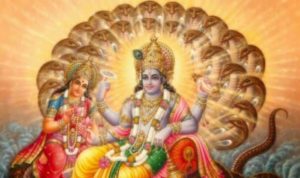Mahadvadasi
Sometimes, due to the manner in which the Ekadasi tithi and the Dvadasi tithis are positioned in relation to the sunrise (there are eight different cases), the vrata is observed on the Dvadasi and the fast is broken the next day, the Trayodasi.
Such a fast day is called a Mahadvadasi, to distinguish it from a regular Dvadasi, which is the day to break the Ekadasi fast.
Srila Prabhupada:
Regarding your questions about the calendar-almanac:
- Herapancami is correct (July 9, 1970).
When an important Dvadasi is next to an Ekadasi, the Ekadasi fasting is transferred and observed on the day of the Dvadasi. This is called Mahadvadasi. October 26th, 1970, is actually Dvadasi, so or the fasting days are observed together, or the Ekadasi fasting is disregarded because the Dvadasi (Mahadvadasi) fasting takes precedence.
Srila Prabhupada: Letter to Pradyumna
Los Angeles, April 29, 1970
Mahadvadasi.
When there is a Mahadvadasi, then fasting on the Ekadasi day is prohibited because the observance should take place on the day of Dvadasi.
Why?
As I already said, there are several reasons, including these:
- If Ekadasi begins after sunrise and ends before sunrise, the next day it is considered lost, too short, thus not full, and impure. Therefore, the next day is called Unmillani Mahadvadasi.
- If Dvadasi begins after sunrise and ends before sunrise on the next day (Trayodasi), it is also lost, and is to be observed as Trisprsa-Mahadvadasi.
- If Dvadasi falls on the sunrise two days in a row, the first Dvadasi becomes Vyanjuli Mahadvadasi.
- When the following Amavasya or Purnima falls on sunrise two days in a row, the preceeding Dvadasi becomes Paksa-Vardhini-Mahadvadasi, Paksa based.
This is a section of the book “A Sidelong Glance”.
To buy the complete book, click above
Post view 273 times



